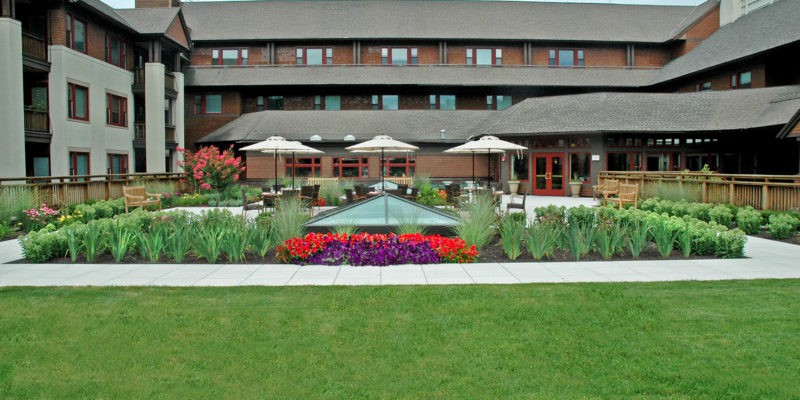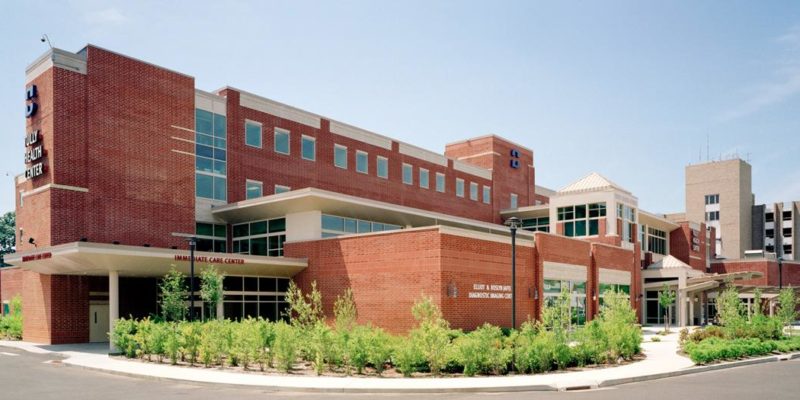An expanding senior population is creating renewed demand for high-quality senior housing. And to us, high-quality means access to nature and using landscaping as a metric to rise to new market challenges and simultaneously improve the quality of life for residents across a spectrum of needs.
This is good news for facility and portfolio managers with capital improvement monies to invest as landscaping and outdoor amenities are adaptable, innovative and sustainable ways to gain competitive advantage.
The economic argument is compelling. Data suggests that an estimated 70% of Americans aged 65 or older may require long-term care. Coupled with a set of statistics suggesting that access to nature improves health care outcomes, and it adds up to landscaping easily delivering a measurable return on investment.
As the assisted living communities of the future take shape, here are four key landscape trends to put on your radar.
Gateway Landscaping and Showcase Features:
The point of entry for new residents and potential residents, and visiting guests, is the front door. In an era where screening devices and advanced safety protocols are the norm, strategically-placed landscaping can help soften the technology, minimize touchpoints and make your building’s main entrance look like a welcoming amenity space without compromising the need for security.
Outdoor Living Rooms:
Outdoor gatherings will continue to meet new standards for public health and safety, and we’re building functional amenity spaces that can host family visits and social gatherings, and are pet-friendly. With a renewed emphasis on an accessible and flexible outdoors, we’re seeing an increase in requests for balconies, patios, courtyards and other spaces that are tech-enabled, airy and ventilated, and meet new restrictions for disease prevention.
Water Features:
Water is a soothing element so it’s only natural that its ability to improve mood is a given. When designed for safety and installed correctly, and integrated with smart-technology, interactive fountains, pondless waterfalls, architectural lighting, and water-recycling and conservation systems are among our most requested outdoor features.
Therapeutic Specialty Gardens & Biophilic Elements:
Simply put, gardens are the fastest and most cost-effective way to add quantifiable value. Value in contributing to health and well-being, value as a participatory activity center, value as a community gathering place and value in what gardens provide as a multi-sensory experience. At any stage of our lives, access to nature is always better than being cooped up. For senior communities, gardens offer ways for residents to interact with plants and engage in nature-based activities: harvestable vegetable gardens and orchards; butterfly gardens, planted with flowering perennials that attract hummingbirds and beneficial pollinators (avoiding plants that attract bees or stinging insects); and bird gardens, with plants that provide forage and nesting habitats for migrating birds or waterfowl.
For more information on how ELM’s senior housing specialists rehabilitate outdoor spaces for a spectrum of specialized needs, contact President, Bruce Moore Jr. at 203-316-5433.


